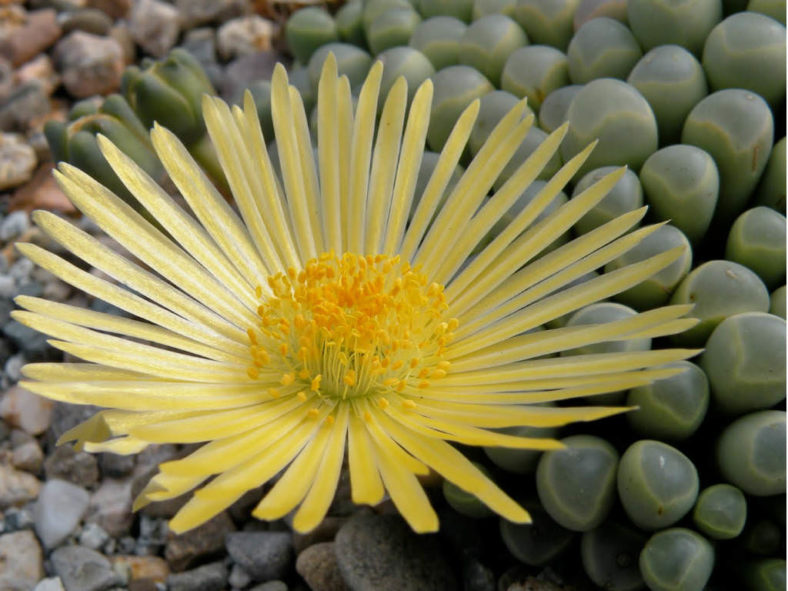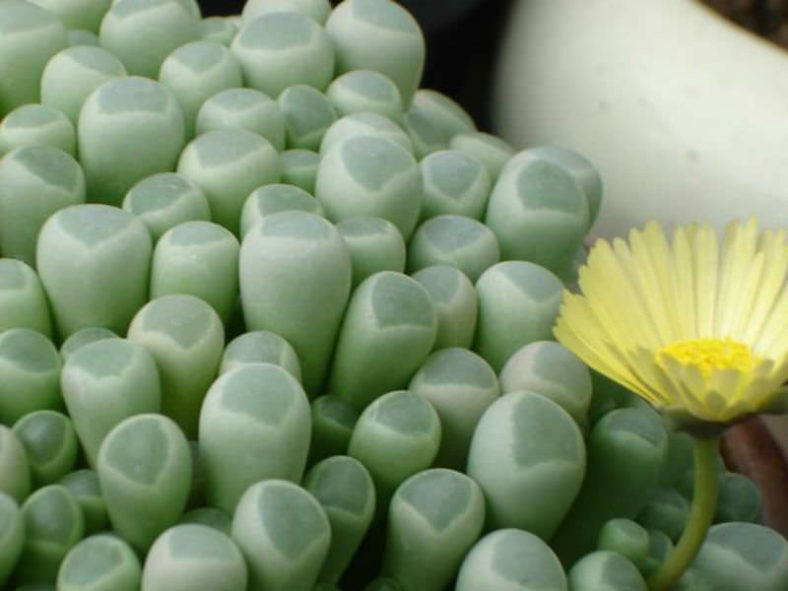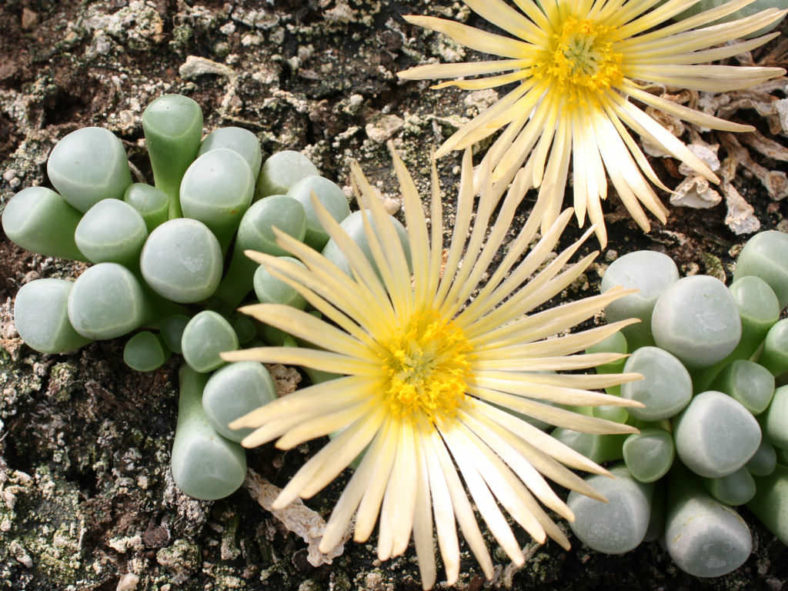Scientific Name
Fenestraria rhopalophylla subsp. aurantiaca (N.E.Br.) H.E.K.Hartmann
Common Name(s)
Baby Toes, Baby's Toes, Window Plant
Synonym(s)
Fenestraria aurantiaca
Scientific Classification
Family: Aizoaceae
Subfamily: Ruschioideae
Tribe: Ruschieae
Genus: Fenestraria
Origin
Fenestraria rhopalophylla subsp. aurantiaca is native to Namibia and South Africa. It generally grows in sandy or calciferous soils. Its status is under review to determine whether its proper status is that of a separate species or a subspecies of Fenestraria rhopalophylla.
Description
Fenestraria rhopalophylla subsp. aurantiaca, also known as Fenestraria aurantiaca, is a small, stemless succulent that forms clumps of erect, glaucous green leaves with a convex tip and a translucent window. The roots are thick, shallow, and spreading. The leaves are smooth, club-shaped, and can grow up to 1.6 inches (4 cm) long.
From fall to spring, the flowers appear solitary or in groups of up to 3 on long pedicels. They are golden yellow and can reach up to 1.2 inches (3 cm) in diameter.

Hardiness
USDA hardiness zones 10a to 11b: from 30 °F (−1.1 °C) to 50 °F (+10 °C).
How to Grow and Care
As with most succulent plants, the biggest problem is over- or under-watering. While Baby Toes tolerate drought conditions, they need moisture stored in their leaves to sustain them during the growing season.
Move pots to a fully sunlit area with temperatures at least 65 °F (19 °C).
Baby Toes have few pest or disease problems but watch for rot when plants are overwatered or in pots that don't drain well.
Fertilize in early spring with a half dilution of cactus and succulent food. Suspend watering in the dormant season. Other than that, care of Baby Toes is so easy the infant whose toes they resemble could almost grow these great little succulents.
Links
- Back to genus Fenestraria
- Succupedia: Browse succulents by Scientific Name, Common Name, Genus, Family, USDA Hardiness Zone, Origin, or cacti by Genus
Photo Gallery
Click on a photo to see a larger version.


